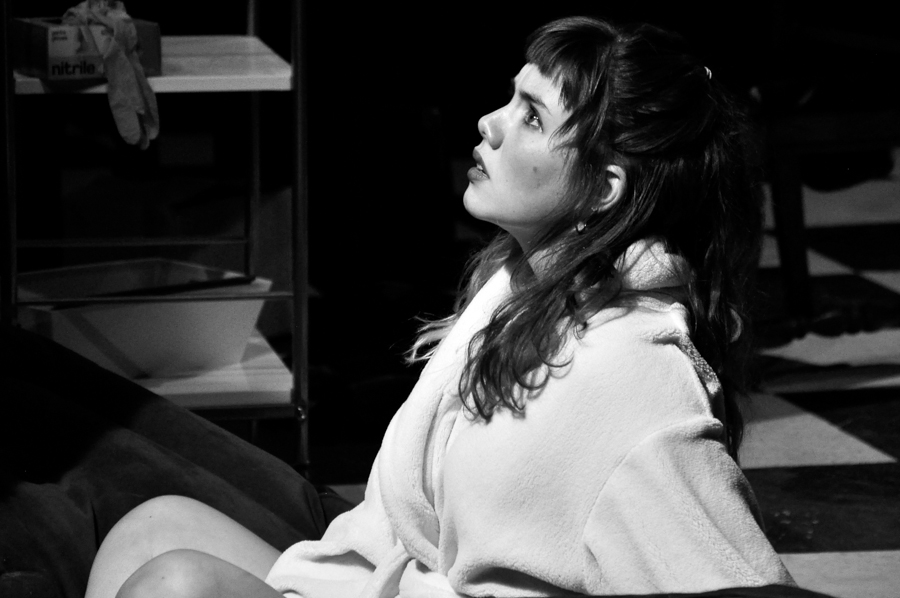Dazzling, amusingly shocking, and highly entertaining, What the Butler Saw begins Players’ Theatre‘s season with a brilliant bang. Written by English playwright Joe Orton in the late sixties, the play transports its audience into a dynamic and hectic environment filled with hilarious misunderstandings, absurd ploys, fallible tricks, and, of course, nudity.
What the Butler Saw opens with a young doctor, Dr. Prentice (Ali Aasim) interviewing a candid young woman Mrs. Berkley (Isobel Van Hagen) for the position of secretary. As the scene progresses, the doctor reveals alternative motives, asking the young woman to undress herself. Before the scandal can develop, Prentice’s wife walks in, and Prentice must fabricate a cover story. This little lie quickly evolves into a grand scheme as Prentice’s colleagues, his wife’s supposed lover, and even the police get dragged into the fray. By the end, the intrigue has descended into chaos, featuring false identities, drag, and drugs.
Upon its release fifty years ago, What the Butler Saw was controversial, to say the least. Punctuated by screams, scandals, and gunfire, the play addresses taboos that are still off-limits today, often leaving the spectator torn between discomfort and laughter. However, Butler’s subtle British humour and Daniel Carter’s directing allow these taboos to become entertaining, rather than shocking. By playing up the comedy and atrocity of sex, violence, and misconduct – “going big”, as Carter describes it – Players’ Theatre’s Butler renders these topics farcical, instead of serious. Instead of representing them as sombre and inhibiting, the play exposes these off-limits subjects rawly and without modesty.
“This play touches on a lot of taboo subjects […] The question is more the audience’s reaction,” Carter explains, curious as to how audience reactions today will compare to the scandal caused by the original production. For example, a scene where actors get undressed in front of the audience would likely have been shocking in the sixties. During this production, however, the same discomfort becomes an element of amusement, inciting impulsive laughter from audience members. The blood, the screams, and the sexual surprise in the show’s climax cause similar reactions. The sharp lighting and revealing costumes also add to the show’s rawness, exposing the actors and their bodies as well as the taboos they are acting out. This play is all about peeling back surfaces, an authenticity which attracts and compels the play’s audience from beginning to end.
“This whole play is a mad farce, so in order to emphasize the taboo nature of things you go big with them, because you go big or you go home,” explains Carter. However, the acting and directing are careful to ensure that while the play is “big,” it never becomes overwhelming. When police officer Sergeant Match runs across stage, drugged, in a small piece of tissue concealing only her torso, the scene comes across as comedic rather than horrific thanks to Cara Krisman’s performance. The playful and genuine portrayals of these alarming moments allow the audience to be in on the joke. Krisman shines in every scene she’s in, while Amalea Ruffett, as the doctor’s wife, is equal parts hilarious and alluring.
What the Butler Saw portrays a hectic and horrible world that is easy to laugh at. But it also addresses topics that are real, giving them light and space. Carter describes it as “one of those hilarious shows that you watch and laugh through, and then at the end you kind of go, is it okay that I laughed at that?” While it’s not always good to laugh at these topics, Butler at least gets its audience thinking, providing a farcical way of engaging with taboos of the sixties and today.

